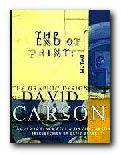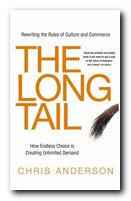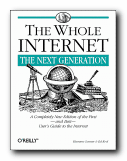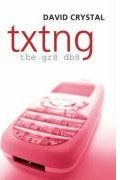Making Art and Commerce Thrive in the Hybrid Economy
Lawrence Lessig is a lecturer in law at Harvard University and a leading authority on copyright and intellectual property rights in the digital age. He helped to found the Creative Commons movement, and he’s a former member of the Electronic Freedom Foundation. His works are a passionate defence of the rights of the individual to the creativity of the past, and a crusade against those forces which try to limit the free exchange of information. Remix: The Copyright Wars is his manifesto on the topic.
 This is the latest in a long line of books he has written in support of such causes – explaining in non-legal language the way in which human rights have been eroded by the vested interests of big business. Whilst upholding the right of all content originators to make a living from what they create, he believes that the current copyright laws restrict the free exchange of information. He also argues that all creativity builds on the creativity of the past, and it is modern technology which has democratised and speeded up the process.
This is the latest in a long line of books he has written in support of such causes – explaining in non-legal language the way in which human rights have been eroded by the vested interests of big business. Whilst upholding the right of all content originators to make a living from what they create, he believes that the current copyright laws restrict the free exchange of information. He also argues that all creativity builds on the creativity of the past, and it is modern technology which has democratised and speeded up the process.
In the past, you could own the ‘source code’ to Shakespeare’s works, but only printing press owners could make copies. Now, as soon as something becomes digitised, any kid in his back bedroom can copy at will. This has given rise to a panic over copyright, which he explores in some depth.
First of all he examines the ‘war against piracy’ in the American courts by a close inspection of the terms in which it is commonly pursued:
In my view, the solution to an unwinnable war is not to wage war more vigorously. At least when the war is not about survival, the solution to an unwinnable war is to sue for peace, and then to find ways to achieve without war the ends that the war sought.
You would almost think he was talking about the Americans in Afghanistan – but no, this is the ‘copyright wars’.
He cites many examples where companies have paid out legal fees ten times greater than the lost revenue they were seeking to recoup.
He agrees with Chris Anderson and Cory Doctorow that the Nay-sayers and prophets of doom on all this are wrong. The future is not likely to be an either/or choice between prohibition and control versus unbridled anarchy. It’s much more likely to be a creative symbiosis of past and future technologies.
He then addresses the central theme of the book – how much is it possible to quote from someone else’s work in a new work for private or public consumption? The rules and general practice are quite different, depending on the medium. With printed text it is a perfectly normal, accepted practice to quote from someone else’s work. In fact academic writing specifically requires a knowledge and accurate quotation of previous works in the same subject.
But use the same approach with audio recordings and you’ll end up with a solicitor’s ‘cease and desist’ letter from Sony or Decca. And his argument is that this restriction is a brake on both creativity and freedom of information.
On mixed media he also makes the very good point that the sort of well-edited video clips with over-dubbed sound tracks shown in TV political satire (and now on blogs) are more effective than long-winded essays taking 10,000 words to make the same point.
Most people today don’t even have time to read long articles. They get their information in much shorter chunks. As he puts it, very pithily – “text is today’s Latin”. It’s an extreme view, but you can see his point.
A propos of which, he also practices what he preaches. He developed a style of presentation which uses rapid display of short, memorable phrases or pictures. Here’s an example which takes a while to load, but is well worth the wait. It’s quite old now, but it demonstrates a technique of presentation which will not date: sound and text being used together for maximum effect.
One thing about his writing I found quite inspiring is that for every bold proposition he makes, he looks at the possible objections to it. (In fact a whole section of his web site is devoted to criticisms of his work.)
He makes a profound distinction between what he calls read-only (RO) and read-write (RW) culture. Both are important, but they have the difference that RO encourages passive reception, whereas RW encourages a written, that is a creative response. This leads him to argue for the enhanced value of all ‘writing’ – by which he means not only text, but the manipulation of other media, such as the audio and video files which are the stock-in-trade of the mashup artists.
His point is that these collage-type works are definitely not examples of parasitic imitation, and that in almost all cases they reveal a skilled appreciation of the medium.
The second part of the book is an investigation of eCommerce – conducted at a level just as radical and profound. He looks Google, Amazon, and Netflix as examples of businesses that have become successful by defying the normal laws of commerce. They allow other companies to share their information, and in Amazon’s case they even allow competitors onto their site. By doing this they make more money, and they control more of the field.
For the sake of those people who didn’t catch it first time round, he explains Chris Anderson’s Long Tail Principle. He then looks at the ‘sharing economies’ to which the Internet has given birth – the Open Source projects and the Wikipedias which exist on the voluntary efforts of volunteers.
Next he passes on to what he calls the ‘hybrid economies’ – companies such as Slashdot and Last.fm who offer a community but make money by advertising revenues. The subtle distinctions between these different models have to be handled carefully – otherwise sensibilities (and revenue streams) might be affected.
He looks at the ethical and practical conflicts between Old and New economies – those based on greed and naked competition, and those based in the ‘hybrid’ sector of sharing and cooperation. Eventually this takes us back to the issue of copyright, where he has some radical proposals for reform.
The first is that basically all genuinely amateur use of copyrighted material should be exempt from prosecution. It is pointless issuing legal writs against some kid sampling and posting on YouTube. The second is a suggestion that copyright is returned to its original status – a fourteen year term which is renewable if the owner so wishes.
Next comes a suggestion called ‘clear title’ – which means that the item being copyrighted needs to be clearly defined. Then comes the de-criminalisation of P2P file sharing, and the end of prosecuting sampling and mashups. As he suggests, supported by people in the pop music business, there is no evidence to prove that a sample or mashup detracts from sales of the original. All of these seem perfectly reasonable – though I suspect vested corporate interests would think otherwise.
This is a passionate and thought-provoking book on the ethics of copyright and creativity in an age of rapid technological change. It is radical, free-thinking, and a challenge to anyone participating in the digital world right now. Lawrence Lessig is a voice to take note of. But you’ll have to move fast. He seems to be in a permanent state of rapid development, and by the time you’ve read this, his latest book, he’ll have moved on elsewhere. If you go to his official site at lessig.org you’ll see what I mean.
© Roy Johnson 2010
Lawrence Lessig, Remix: Making Art and Commerce Thrive in the Hybrid Economy, London: Penguin Books, 2008, pp.327, ISBN: 0143116134
More on eCommerce
More on media
More on publishing
More on technology

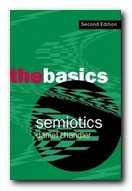
 Today’s Internet users are relying on their smartphones or tablets for quick and easy Internet access, rather than laptops and desktops. And no wonder. It’s simply more convenient and portable. However, those with tight finances haven’t always been able to enjoy the benefits of 4G connectivity. But this will all change with the announcement of T-Mobile’s reinvigorated challenger strategy. This offers more affordable options to cash-strapped customers. When subscribers to
Today’s Internet users are relying on their smartphones or tablets for quick and easy Internet access, rather than laptops and desktops. And no wonder. It’s simply more convenient and portable. However, those with tight finances haven’t always been able to enjoy the benefits of 4G connectivity. But this will all change with the announcement of T-Mobile’s reinvigorated challenger strategy. This offers more affordable options to cash-strapped customers. When subscribers to 

